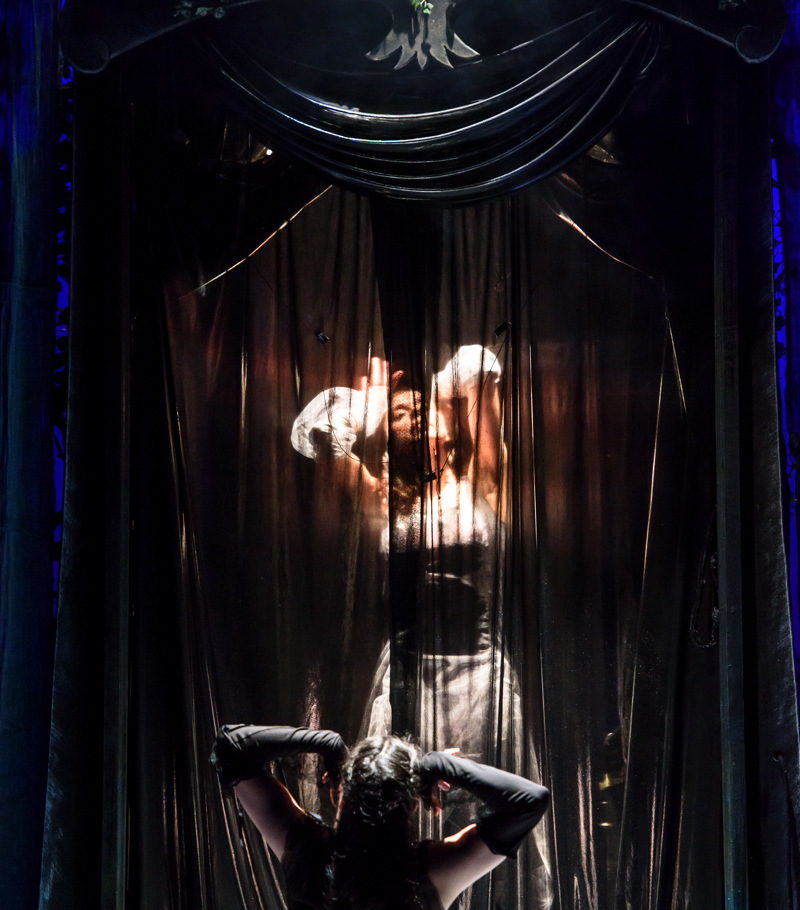Blog:
Liv Lorent
The choreographer and artistic director tells us
why Snow White was a fairytale she had to retell
Snow White is not a story I ever thought that we would want to create onstage, but when I read one day that in the very first version of the story, published by the Grimms, it was Snow White’s real mother – not her stepmother – who wanted her dead, this was suddenly a much darker and more fascinating story to tell.
We are surrounded every day with stories about women all over the world brutalising themselves with their attempts to look more and more beautiful, often at great risk to themselves. The story of Snow White has such power and relevance, as it digs into the deep desire to preserve beauty at all costs. The Queen in Snow White takes this urgent desire to an extreme where she cannot bear having any aesthetic female rival, and when her longed for progeny outshines her it ends with terrible consequences.
Our version of Snow White explores ageing in a Queen, as well as the strong mutual female desire to be regarded as beautiful, experienced by both mother and daughter. The inevitability of ageing and the resistance to that change in oneself is explored in this story when even the Queen – the most beautiful woman in the land – becomes the wallflower at the ball as her looks change with time. Most of us don’t know what it is to look in a mirror and be completely happy with what we see, but imagine having that privilege all your life and then losing it? We were interested to look at what drives a woman to be so desperate to be seen as the most beautiful that she will do anything – even desire to eat her own daughter’s heart.
The mirror is an extraordinary presence in the story and in our version is presented by a dancer who reflects back to the Queen what she is and who she is becoming, as well as how she moves. The mirror always tells the truth and that becomes unbearable for the Queen. If the mirror lied and told the Queen what she wanted to hear then the unravelling of the Queen’s mind would not happen. Carol Ann Duffy has brilliantly retold the story in such a way that we see Snow White also be vulnerable to vanity – which in the end makes her risk her life as she opens the door to receive the pretty ribbon, comb and apples for sale. “Even though the dwarfs had told Snow White never to open the door to a stranger, she could not resist… after all, she was her mother’s daughter.”
“The constant self-appraisal of a dancer is very much the world that the Queen subjects herself to and it is her eventual undoing.”
As a choreographer I have always been interested in exploring the beauty of women on stage and the story of Snow White has a strong connection with all of us who trained as dancers. The technical, aesthetic quest and the training for many dancers are devoted to the creation of beauty in lines and space with our bodies. Training in front of mirrors and experiencing the constant comparison with other people’s limbs and torsos, the disappointment as you find yourself wishing for someone else’s flexibility of hip, arch of foot, strength of back or height of jump – this constant self-appraisal is very much the world that the Queen subjects herself to, and is her eventual undoing.
We have also loved exploring the underworld of the seven miners – “The folk who laboured here had been bent double and stunted by their hard work, from crawling, tunnelling, burrowing, hewing, crouching, chiselling and carrying from dawn till dusk.” Their gruff compassion and generosity rescue Snow White and they try to save her from harm at the hand of her mother. Their day job is to mine for oils and minerals that “keep the Queen and her household warm and beautiful, wealthy and well-groomed”. They are the heroes of the story and it is the head miner – who is also the Huntsman – who eventually saves Snow White.
We have really loved working on this production and weaving in Carol Ann’s wonderful words, spoken by Lindsey Duncan, into our original and orchestral Murray Gold soundtrack. All the collaborators have worked together to create a dynamic piece of dance theatre that has a very clear and strong method of storytelling. What is so rewarding about the retelling of a classic story is that we can bring out the themes and content that are most interesting to us artistically, in response to the world we live in now, and allow the fairytale to speak its truth to us, whether we are children or adults. As a company Ballet Lorent creates dance theatre that has impact, emotion and beautiful imagery packaged into a two-act, family-friendly ballet that has guts and soul. Most of us don’t have enough time or money to spend with our families, so when we do invest in some escapism and go to the theatre it has to count. We have made Snow White for audiences of different generations who are looking to enjoy a fairytale experience of dance theatre as a night out with emotion, surprise and wonder.
Snow White is at Lawrence Batley Theatre, Huddersfield on 30 Sept

Leave a reply
Your email address will not be published.